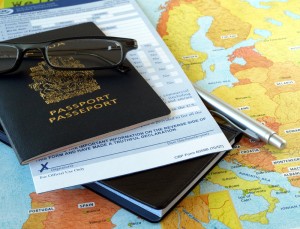We get all sorts of passport questions here at Amazing Journeys. Let’s see if we can clear the air on some for you…
When is the proper time to renew my passport?
Many travelers don’t think about renewing their passport until planning their next international trip. But you really need to think about it in advance. Most countries will not allow a traveler to come into their country unless they have at least 6 months beyond their travel date. Many-a-traveler have been turned away at the gate because they don’t have sufficient time left on their passport. Bottom line – check your passport before you plan your next trip. If you are reading this now and are not sure of when your passport expires, go check it right now!
Do I need a passport when traveling to Canada or the Caribbean?
By air – yes. By cruise – no. We recommend you always bring your passport when traveling outside of the US. Let’s say that you are on a cruise in the Caribbean and you officially do not need a passport. But there is an emergency situation at home and you need to fly home right away. Without a passport, you may not board a flight. You would have to get to a US Embassy and apply for a passport or get a replacement passport there. There may be an embassy on the island you are on or you may need alternative transportation to get to a different island, because you are officially grounded until you have a replacement passport.
If I get a new passport, will my Global Entry expire at the same time?
Global Entry, the program that allows you to use “fast-lane” privileges through US airport security and when re-entering the US after traveling internationally, has a shelf life of 5 years. Passports are good for 10 years. But if your passport expires prior to your Global Entry expiration date, no worries. Membership will remain valid and active if the passport expires, however, you will not be able to use your account until you update your new passport number in the GOES system, The Global online Enrollment System in which you created when you applied for the program.
How can I avoid running out of pages in my passport?
That’s a great problem to have and we love hearing travelers say they have run out of pages –that means they are off seeing the world! Some countries require that you have several empty pages in your document before entering their country. You could run out of pages very quickly with a visit to Southern Africa or South America. They use many pages on one trip!
The traditional passport book has 28 pages but there is an option to get 56 pages from the get-go. It used to be that you could ask for more pages, and the Passport Office would sew in additional pages and send it back to you, without a charge! There is no such thing as a free lunch anymore and you now have to order a new passport (at the full renewal fee) when you run out of pages. When renewing your passport, you should always ask for the maximum number of pages.
Are there better times than others to renew a passport?
2017 is going to be a banner year for passport renewals, according to the State Department. Do you remember when you were able to travel to Mexico and Canada and all over the Caribbean without a passport? Well, all of that changed in 2007 and many Americans applied for a passport during that year. What that means is that all of those passports are now coming up for renewal and the wait times could be longer than normal. Although they are not expecting to have the 3 million passport accumulation and three month wait time they had in 2017, they do expect more Americans to renew this year. In general, summers and holiday travel times are what create the most back-log. So it’s best to plan early and not stress about running out of time before a vacation or business trip.
I don’t have a passport and would like to get one now. How and where do I apply?
Whether you need a new passport or want to renew an old one, this link will walk you through the process. For those first-timers, you will need to apply in person. Most US post offices can do this for you. Just follow the steps in the link above.
Whether with new passport or old, we look forward to traveling with you soon!













